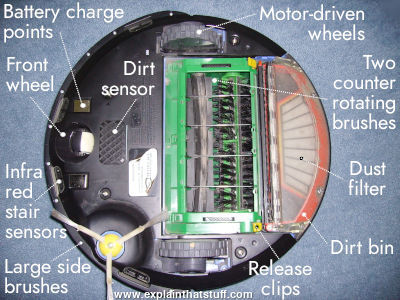Define: The problem we are trying to fix is to help people who live alone or have health issues who need someone to help them at a time in need. If they need a first aid kit or someone to call 911 when they can’t, we hope this device can bring them the supplies they need and/or call 911 at the the push of a button.
Discover: This problem has been addressed previously with stay at home nurses or “nurse next door”. Our goal is for our device to be able to help the patients when the nurse can’t be there.
Dream: Our idea started out as Baymax from the movie “Big Hero 6”, Baymax is an inflatable robot who has first aid equipment inside him and when he hears certain trigger words such as “ouch” or “help” he comes out of his house and is ready to help. Obviously we can’t do this, so our idea is to have a Roomba like structure with a first aid kit attached and a siri like device inside. In the end we hope our device will be able to detect a trigger word, sound or from the click of a bluetooth button and the smart phone will kick in and and call 911, you can deactivate the call by pressing a certain sequence on your bluetooth button, another word will trigger it to come out of its charging house and attempt to find you throughout the house so if you’re hurt you won’t have to get up to access the first aid kit it will simply bring it to you.
Deliver: The diagram below shows what components are in a Roomba:
We would take out the brushes and the dust bin and replace it with compartments filled with the most basic and necessary first aid equipment and a siri like device. We would like to keep our device fairly light so it is easier to transport and move on it’s own.
Roomba uses iRobot’s AWARE Robotic Intelligence System to make many decisions for itself, so minimal human input is required. The AWARE system is made up of multiple sensors that pick up environmental data, send it to robot’s the micro processor and alter Roomba’s actions accordingly, we would also need this in our device to make sure it can come directly to you without having to further injure yourself.
A typical robot has a movable physical structure, a motor of some sort, a sensor system, a power supply and a computer “brain” that controls all of these elements. The actuators are all wired to an electrical circuit. The circuit powers electrical motors and solenoids directly, and it activates the hydraulic system by manipulating electrical valves. In our device we’d like to have a parallel circuit because it the easiest, and most efficient way to create a working circuit with multiple attachments.
SIRI (and CALO) involve a number of technologies, including natural language processing, question analysis, data mashups, and machine learning. We would like a device like this in our device because it would need to contact someone and find it’s way to the injured person. Below is a diagram how siri works, simplified:
SIRI’s main tasks, at a high level, involve:
- Using ASR (Automatic speech recognition) to transcribe human speech (in this case, short utterances of commands, questions, or dictations) into text.
- Using natural language processing (part of speech tagging, noun-phrase chunking, dependency & constituent parsing) to translate transcribed text into “parsed text”.
- Using question & intent analysis to analyze parsed text, detecting user commands and actions. (“Schedule a meeting”, “Set my alarm”, …)
- Using data mashup technologies to interface with 3rd-party web services such as OpenTable, WolframAlpha, to perform actions, search operations, and question answering (Utterances SIRI has identified as a question, that it cannot directly answer, it will forward to more general question-answering services such as WolframAlpha)
- Transforming output of 3rd party web services back into natural language text (eg, Today’s weather report -> “The weather will be sunny”)
- Using TTS (text-to-speech) technologies to transform the natural language text from step 5 above into synthesized speech.




April 20, 2017 at 5:39 pm
Great work explaining your innovation. I like how you have taken something like the Roomba and innovated it. You did an awesome job explaining how your device would expand on the ideas of the Roomba and Siri. I am excited to see how far you get with your innovation.